
 |
|
|||||||
| Aldrovanda vesiculosa Everything about the Water Wheel Plant |
 |
|
|
Thread Tools | Search this Thread | Display Modes |
|
#1
|
||||
|
||||
|
lisham
Senior Member     member is offline  Joined: Jun 2007 Gender: Male  Posts: 393 Location: Langkawi  Aldrovanda vesiculosa Aldrovanda vesiculosa« Thread Started on Aug 21, 2007, 10:13pm » Guys and Gals... I think this might be of interest. Does any one of us here got this? I googled some info about this specie... Aldrovanda vesiculosa, known as the waterwheel plant, is the sole extant species in the flowering plant genus Aldrovanda of the family Droseraceae. This plant feeds on small aquatic invertebrates using traps very similar to those of the Venus Flytrap. The traps are arranged in whorls around a central, free-floating stem, hence the common name. This plant is one of the few plants capable of rapid plant movement. While the genus Aldrovanda is monotypic, extinct species are known to have existed. There is also wide variability among populations of significantly different geographic locations, as the species is found natively on four continents. A. vesiculosa is a rootless aquatic plant; only seedlings possess rudimentary roots, which however soon die off. The plant consists of floating stems reaching a length of 6-11 cm. The 2-3 mm trap leaves grow in whorls of 5-9 in close succession along the plant's central stem. The actual traps are held by petioles which hold air sacks that aid in flotation. One end of the stem continually grows while the other end dies off. Growth is quite rapid (4-9 mm/day in Japanese populations, so that in optimal conditions a new whorl is produced once or more a day. The actual traps consist of two lobes which fold together to form a snap-trap similar to that of the venus fly trap. These traps, which are twisted so that the trap openings point outward, are lined on the inside by a fine coating of trigger hairs, snapping shut in response to contact with aquatic invertebrates and trapping them. The closing of this trap takes a mere 0.01-0.02 seconds, making it one of the fastest examples of plant movement in the kingdom. This trapping is only possible in warm conditions (20 °C). Each trap is surrounded by between four and six 6-8 mm long bristles which prevent triggering of traps by debris in the water. The small, solitary white flowers of A. vesiculosa are supported above the water level by short peduncles which arise from whorl axes. The flower only opens for a few hours, after which the structure is brought back beneath the water level for seed production. The seeds are cryptocotylar, meaning that the cotyledons remain hidden within the seed coat and serve as energy storage for the seedlings. The waterwheel plant, however, seems to bloom seldom, at least in temperate regions. . vesiculosa prefers clean, shallow, warm standing water with bright light, low nutrient levels and a slightly acidic pH (around 6). It can be found floating amongst Juncus, reeds, and even rice. A. vesiculosa was discovered in India in 1699 by Leonard Plukenet, who named the plant Lenticula pulustris Indica. The modern botanical name originates from Giuseppe Monti, who described Italian specimens in 1747 and named them Aldrovandia vesiculosa in honor of the Italian naturalist Ulisse Aldrovandi. When Carl Linnaeus published his Species Plantarum in 1753, the "i" was dropped from the name (an apparent orthographic error) to form the modern binomial. And here are the pix http://www.bestcarnivorousplants.com...otogallery.htm « Last Edit: Aug 21, 2007, 10:15pm by lisham »Link to Post - Back to Top  Logged artificialive Logged artificialivePioneer Member / Global Moderator         member is offline   Joined: Dec 2006 Gender: Male  Posts: 713 Location: Ayer Keroh, Malacca  Re: Aldrovanda vesiculosa Re: Aldrovanda vesiculosa« Reply #1 on Aug 21, 2007, 10:27pm » hehe Lisham, In my personal opinion, this is a dream CP plant for most of the CPers in the world. Its hard to get this CP  When i first read the article on water wheel (when I was first bitten by the nep bug), i thought that it is the same family as utrics. I was wrong that this belongs to the Drosera family. When i first read the article on water wheel (when I was first bitten by the nep bug), i thought that it is the same family as utrics. I was wrong that this belongs to the Drosera family.Link to Post - Back to Top  Logged[Naj Grow List] --- [Naj Wanted List] lisham Logged[Naj Grow List] --- [Naj Wanted List] lishamSenior Member     member is offline  Joined: Jun 2007 Gender: Male  Posts: 393 Location: Langkawi  Re: Aldrovanda vesiculosa Re: Aldrovanda vesiculosa« Reply #2 on Aug 22, 2007, 4:25pm » yo artificialive... I'm glad you like the aldrovanda too... Nice nice plants... Nobody here got one huh? Hmmm... Better start asking around to be this species into our collection.... Link to Post - Back to Top  Logged artificialive Logged artificialivePioneer Member / Global Moderator         member is offline   Joined: Dec 2006 Gender: Male  Posts: 713 Location: Ayer Keroh, Malacca  Re: Aldrovanda vesiculosa Re: Aldrovanda vesiculosa« Reply #3 on Aug 23, 2007, 10:08pm » Hi Lisham, an online nursery sells this aldrovanda, but its pricey. heheh Its an online nursery based in Czech Republic, i think. http://www.czplants.com aldrovanda: http://www.czplants.com/en/prodej.php?si....c75c6&jaka=akce Link to Post - Back to Top  Logged[Naj Grow List] --- [Naj Wanted List] artificialive Logged[Naj Grow List] --- [Naj Wanted List] artificialivePioneer Member / Global Moderator         member is offline   Joined: Dec 2006 Gender: Male  Posts: 713 Location: Ayer Keroh, Malacca  Re: Aldrovanda vesiculosa Re: Aldrovanda vesiculosa« Reply #4 on Aug 28, 2007, 9:46pm » Why aldrovanda? 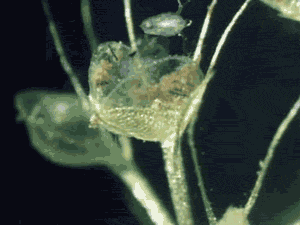 its an active trap like a VFT  Link to Post - Back to Top  Logged[Naj Grow List] --- [Naj Wanted List] lisham Logged[Naj Grow List] --- [Naj Wanted List] lishamSenior Member     member is offline  Joined: Jun 2007 Gender: Male  Posts: 393 Location: Langkawi  Re: Aldrovanda vesiculosa Re: Aldrovanda vesiculosa« Reply #5 on Aug 29, 2007, 1:31pm » Yeap lo... It's a small trap... from what I read... It's hard to keep... I mean I used to have an aquarium with live plants and fishies... It got 2 seasons... Plants not growing... Plants growing like mad until no room for fish to swim... Maybe we should just admire the species online...  Link to Post - Back to Top  Logged strath76 Logged strath76Full Member    member is offline Joined: Jan 2008 Gender: Male  Posts: 122 Location: Australia  Re: Aldrovanda vesiculosa Re: Aldrovanda vesiculosa« Reply #6 on Mar 11, 2008, 4:23pm » If anyone is still intersted in this plant Triffid Park in Australia sell it. The price is $25 for 2 plants. They have a website that you can check out, I have posted it below. Allen Lowrie also sells the plants at $15 each. Allen doesn't use the web, he only works through conventional mail. Hope this helps. http://www.triffidpark.com.au/ Link to Post - Back to Top  Logged ifurita Logged ifuritaJunior Member   member is offline Joined: Dec 2007 Posts: 71 Location: Singapore  Re: Aldrovanda vesiculosa Re: Aldrovanda vesiculosa« Reply #7 on Mar 11, 2008, 6:50pm » Me personally don't think its hard to get this CP since so many people sell it, its just expensive. Plus, since its an aquatic CP, the chances of it reaching you alive from overseas are relatively low. Keeping this joker alive is another matter altogether. I've read that strains from temperate and subtropical regions have temp and/or dormancy requirements, so if any of us wants to try, we should try and obtain a tropical strain. It is supposed to be very picky about water quality and algae can pose a major problem. While this all does sound really bad for those of us who want to grow this bugger(me included), my personal opinion is that it doesn't sound that much more difficult to grow than an aquatic Utric, if the nutrient content of the water can be kept to a minimum. I'm not saying its easy, just that its worth a shot, yea? I know I'll have to figure out how to grow it sooner or later, if I want to keep to my goal of growing as many genera of CPs as possible  Link to Post - Back to Top  Logged strath76 Logged strath76Full Member    member is offline Joined: Jan 2008 Gender: Male  Posts: 122 Location: Australia  Re: Aldrovanda vesiculosa Re: Aldrovanda vesiculosa« Reply #8 on Mar 14, 2008, 5:51pm » The plants I listed above from Allen Lowrie I think are from the Darwin area (tropical). I think Allen also sends the plant as Taurions I.e. the dormant stage. This may improve the chances of survival for mail order. Link to Post - Back to Top  Logged David Logged DavidAdministrator         member is offline   Joined: Dec 2006 Gender: Male  Posts: 2,326 Location: Kuala Lumpur  Re: Aldrovanda vesiculosa Re: Aldrovanda vesiculosa« Reply #9 on Mar 15, 2008, 10:04am » I understand from Barry Rice book that the red strain does not need dormancy and can be grown year round. That's why I have this in my "want list".  But if I get it I would want the strain that does not need dormancy. But if I get it I would want the strain that does not need dormancy. On bestcarnivorousplants website and Barry's book, it states that there are Aldrovanda from Tropical Asia. I think that's interesting for us living in tropical Asia. Hmm, I've just gone through the website bestcarnivorousplants. They have the subtropical/tropical Aldrovanda for sale: 1. African subtropical Aldrovanda vesiculosa plants from Okavango Swamp, Botswana 2. Subtropical: East-coast Australia, S. of Sydney, NSW; 3. Tropical: S. of Darwin, N Australia, NT. 4. Tropical: Kimberley, NW Australia, WA. 5. Tropical: Leach Lagoon near Katherine, N. Australia, NT. 6. Subtropical: Esperance Bay, SW Australia, WA. Those of you who are interested on the cultivation of Aldrovanda can also read up on Barry's book. He list down some simple protocols to follow and cultivation tips when cultivating this plant. Step by step instruction on how to setup the tank for the plant. « Last Edit: Apr 2, 2008, 9:31am by David »Link to Post - Back to Top  LoggedMy Wantlist rsivertsen LoggedMy Wantlist rsivertsenNew Member  member is offline  Joined: Apr 2008 Gender: Male  Posts: 15 Location: Northwest New Jersey, (USA)  Re: Aldrovanda vesiculosa Re: Aldrovanda vesiculosa« Reply #10 on Apr 11, 2008, 10:57pm » Hey guys, I have the Japanese strains (both Tokyo and Kyoto) growing naturalized in a small pond near me. Here are some pics:   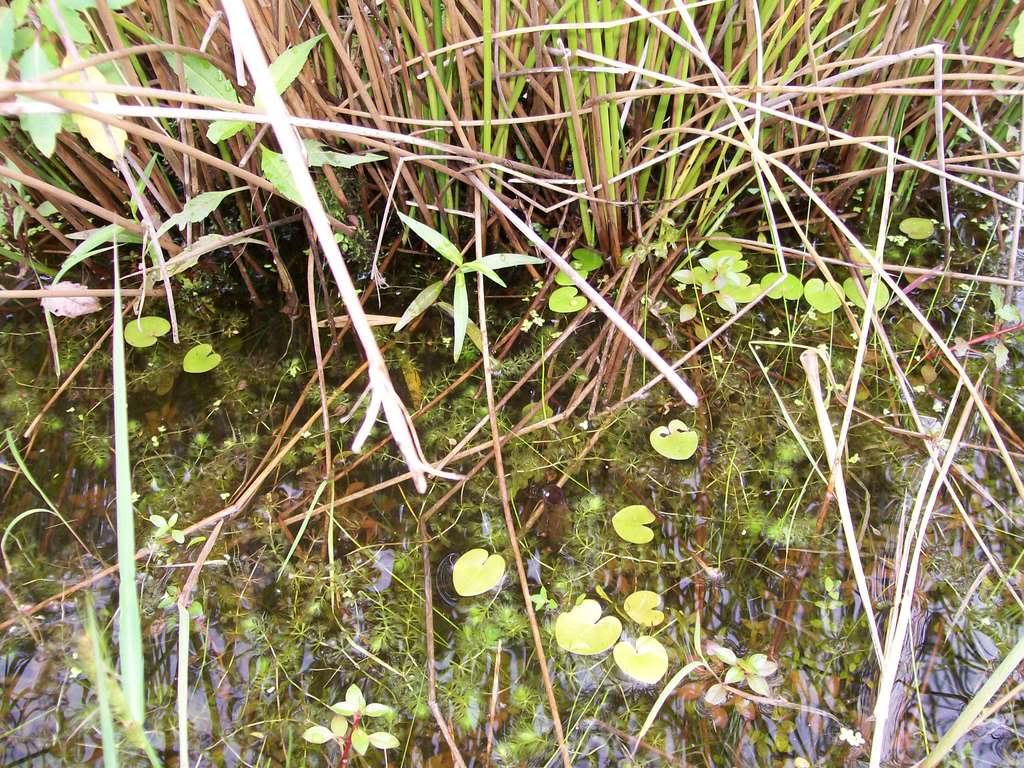 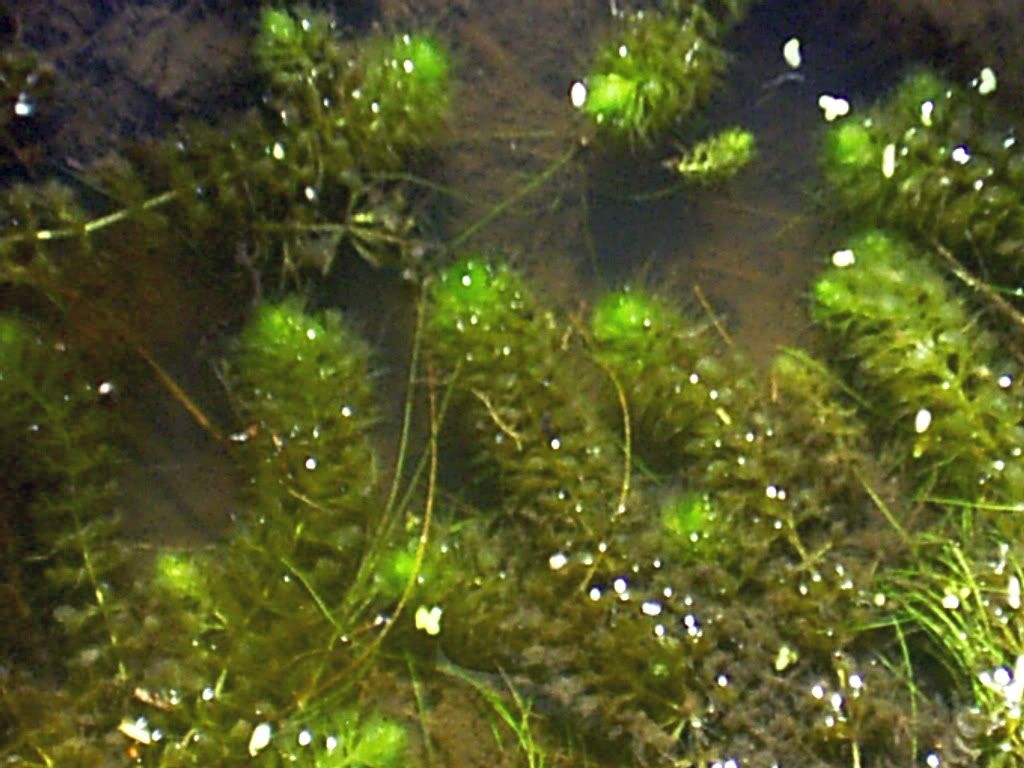 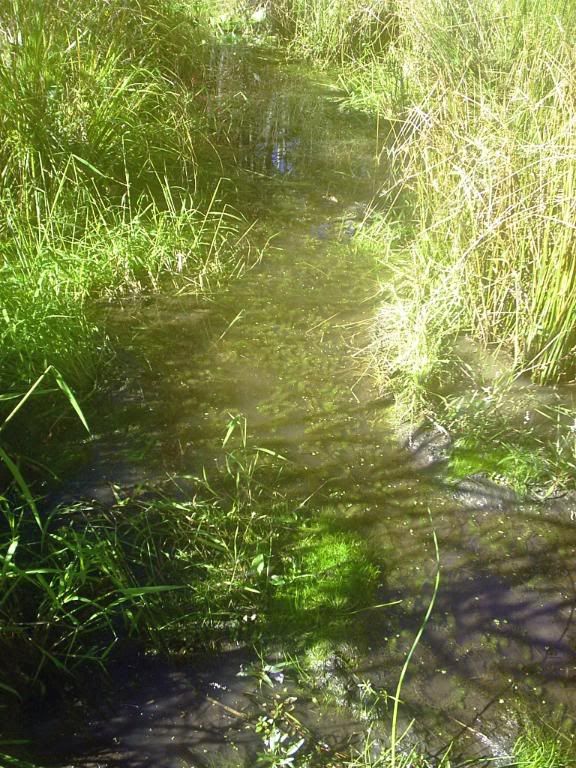  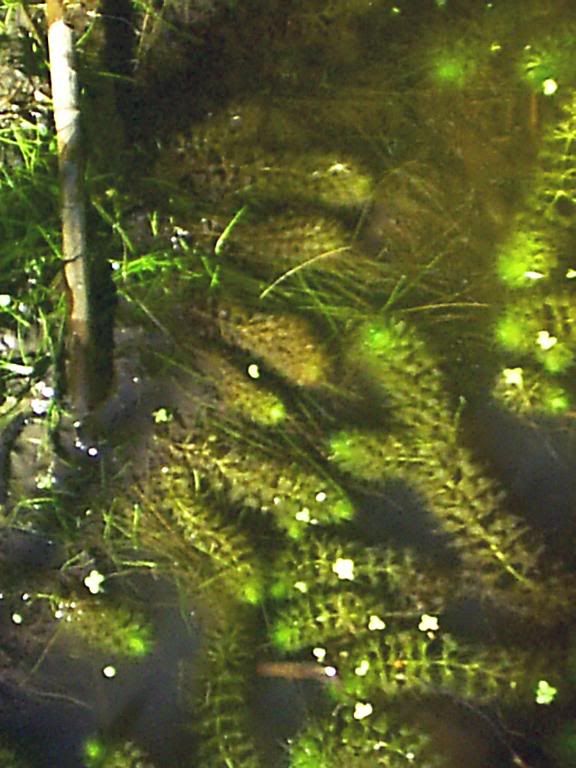 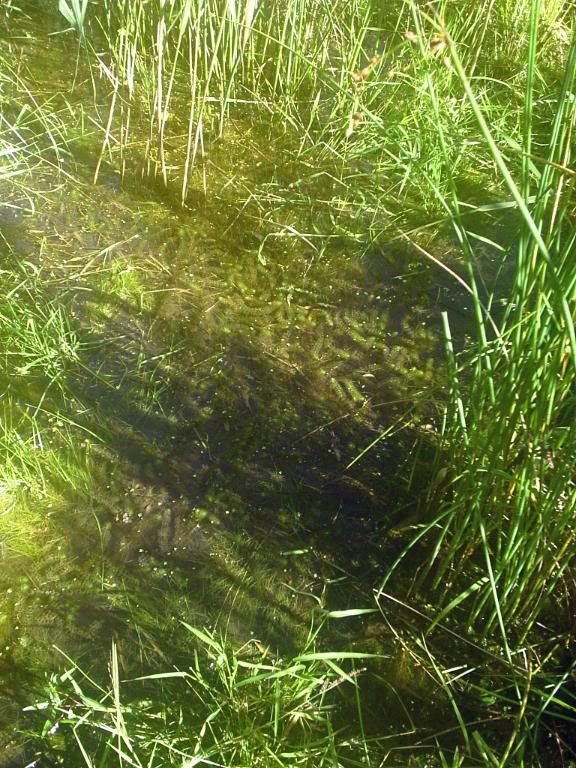 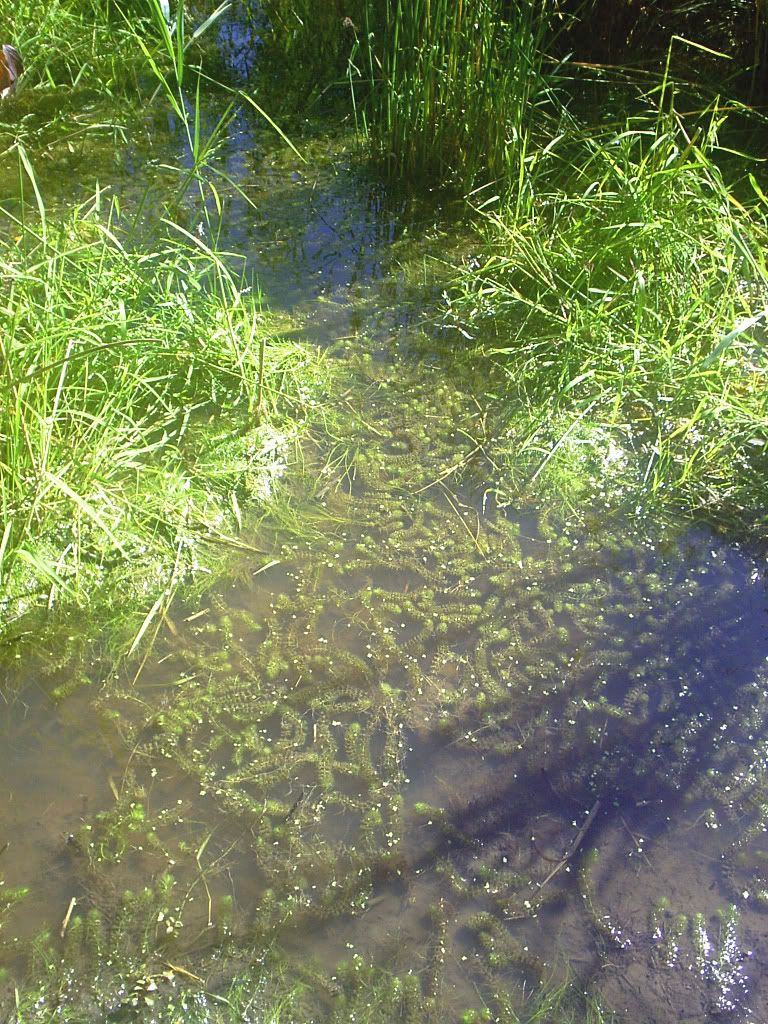  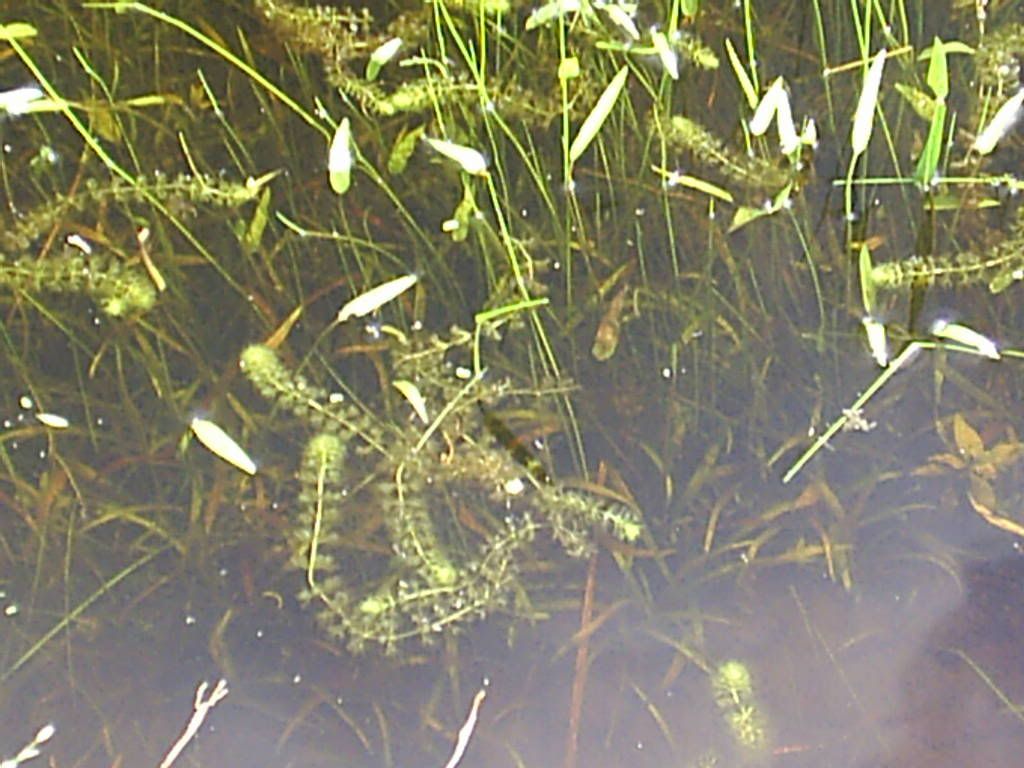 Link to Post - Back to Top  LoggedI'm not suffering from insanity, ... rather enjoying it actually! piscesilim LoggedI'm not suffering from insanity, ... rather enjoying it actually! piscesilimGlobal Moderator        member is offline Joined: Dec 2006 Gender: Male  Posts: 463 Location: Bukit Mertajam, Penang  Re: Aldrovanda vesiculosa Re: Aldrovanda vesiculosa« Reply #11 on Apr 11, 2008, 11:02pm » Nice aquatic VFTs!! Dream to have this CP quite some time already. Are you from Japan? Link to Post - Back to Top  LoggedLim rsivertsen LoggedLim rsivertsenNew Member  member is offline  Joined: Apr 2008 Gender: Male  Posts: 15 Location: Northwest New Jersey, (USA)  Re: Aldrovanda vesiculosa Re: Aldrovanda vesiculosa« Reply #12 on Apr 11, 2008, 11:26pm » I live in Northwest New Jersey, USA. - Rich Link to Post - Back to Top  LoggedI'm not suffering from insanity, ... rather enjoying it actually! piscesilim LoggedI'm not suffering from insanity, ... rather enjoying it actually! piscesilimGlobal Moderator        member is offline Joined: Dec 2006 Gender: Male  Posts: 463 Location: Bukit Mertajam, Penang  Re: Aldrovanda vesiculosa Re: Aldrovanda vesiculosa« Reply #13 on Apr 11, 2008, 11:36pm » Welcome to petpitcher! Link to Post - Back to Top  LoggedLim rsivertsen LoggedLim rsivertsenNew Member  member is offline  Joined: Apr 2008 Gender: Male  Posts: 15 Location: Northwest New Jersey, (USA)  Re: Aldrovanda vesiculosa Re: Aldrovanda vesiculosa« Reply #14 on Apr 12, 2008, 4:46am » Thanks for the warm welcome!  Is there anyone here who may want to trade some Nepenthes seed for Aldrovanda? (Unless there are import and legal issues) If so, please send me a PM.  « Last Edit: Apr 12, 2008, 4:49am by rsivertsen »Link to Post - Back to Top « Last Edit: Apr 12, 2008, 4:49am by rsivertsen »Link to Post - Back to Top  LoggedI'm not suffering from insanity, ... rather enjoying it actually! piscesilim LoggedI'm not suffering from insanity, ... rather enjoying it actually! piscesilimGlobal Moderator        member is offline Joined: Dec 2006 Gender: Male  Posts: 463 Location: Bukit Mertajam, Penang  Re: Aldrovanda vesiculosa Re: Aldrovanda vesiculosa« Reply #15 on Apr 12, 2008, 8:59am » Hi, I've PMed you. Link to Post - Back to Top  LoggedLim arvin555 LoggedLim arvin555Junior Member   member is offline Joined: Feb 2008 Posts: 64 Location: Phillipines  Re: Aldrovanda vesiculosa Re: Aldrovanda vesiculosa« Reply #16 on Jun 6, 2008, 10:58pm » Rich, the photos you posted looks similar to an Utric that a friend gave me just recently. I am not saying that maybe you have mis IDed the CP on your pond, but i'm crossing my fingers that I might be surprised that the U. Vulgaris that I was told the plant that I got is, might end up to be an Aldrovanda  The one strand that I got I cut already and now both have grown that I was able to cut it again to have 3 stalks already. Hopefully I can get more of it no matter if its an Utric or Aldro The one strand that I got I cut already and now both have grown that I was able to cut it again to have 3 stalks already. Hopefully I can get more of it no matter if its an Utric or Aldro  Too bad I don't have Nep seeds to trade with you. Hope Lim is sucessful in propagating.. Hey Lim, wink wink!  (Lim OT, might need some Nothro eggs again). (Lim OT, might need some Nothro eggs again).TTFN Arvin Link to Post - Back to Top  Logged piscesilim Logged piscesilimGlobal Moderator        member is offline Joined: Dec 2006 Gender: Male  Posts: 463 Location: Bukit Mertajam, Penang  Re: Aldrovanda vesiculosa Re: Aldrovanda vesiculosa« Reply #17 on Jun 6, 2008, 11:52pm » Yes. I am propagating. They are growing very fast. I got 2 source. 1 from Taiwan and another 1 from Rich. But the origin should be the same----Japan. I put it in my planted tank and feed them with Artemia. The trap grow bigger now. Will try to feed some baby cherry shrimp. Quite cool! (Now got only 1 species of Killi. N. rachovii. But still eggs. Killi really need a lot of time to take care. They are only zero maintenance when they are still in eggs. Ha ha ) « Last Edit: Jun 6, 2008, 11:59pm by piscesilim »Link to Post - Back to Top  LoggedLim rsivertsen LoggedLim rsivertsenNew Member  member is offline  Joined: Apr 2008 Gender: Male  Posts: 15 Location: Northwest New Jersey, (USA)  Re: Aldrovanda vesiculosa Re: Aldrovanda vesiculosa« Reply #18 on Jun 7, 2008, 4:36am » Hey guys, I'm so glad to see an interest in Aldrovanda here!  They have been growing in my pond since Spring of 2000, I introduced them the previous year, in 1999. It occurs to me now that all of my previous assertions, assumptions, notions and ideas about growing them were ALL wrong! All those years that I tried to grow them in various containers, thinking that it must be some "magic formula" of water chemistry and combination of detritus mixtures, trying different "soups", "teas"" and "broths", various pH settings, trace minerals and all. I now realize that its the BIOLOGY of the water that is the most important aspect in keeping these plants, and getting them to flourish, and NOT the chemistry. They have a very robust and complex symbiotic relationship with monocot plants and a lot of other creatures of the pond that serve various purposes in mutualism, aside from the obvious predator-prey relationships with the zooplankton community. I'll try to dispel some of the common misconceptions of these plants here. First, the term "Aldrovanda Pond" is in itself misleading! When someone mentions the word "pond", it invokes images of a fairly large body of free standing water, at least several meters in length, and a depth of about "knee deep" to "waist deep" or more; some place where you could float a small boat (rowboat, or inflatable), and go fishing or swimming. There are a few open areas like this in this site, an open pond, about waist deep, and about 10M wide; but you won't find any Aldrovanda growing there! It's too deep! Aldrovanda ONLY grows in the very shallow margins, in ankle deep water, no more than 20 cm (6 inches) of free standing water, and the best strands are in areas where the water just barely covers them, 5 cm (2 inches); less is better. They are always found in very close proximity to large monocot plants that produce massive root systems, which provide a constant supply of CO2, and absorbs the excess nitrogenous matter given off by the Aldrovanda. These shallow areas also host the highest population densities of the zooplankton creatures. The water tests moderately hard with neutral pH=7.0, and contains a conspicuous presence of clay. They actually seem to do better in very dirty water! After I walk around among them, my boots churn up lots of clay, and detritus, so much so, that the water becomes opaque, and I can't even see the Aldrovanda strands anymore. Some places get so disgusting, that the water becomes a thin and soupy slurry of mud, clay and detritus. After a few days, when the water settles down, I notice these very same strands make a quantum leap in growth; some strands growing vertical, with their bottom ends still weighed down, stuck in the detritus. This works on several levels. First it releases all those mineral rich nutrients from the clay based silt, and covers the strands with that mixture; next it flushes out all those critters that hide and live in the detritus, so that they wind up on the Aldrovanda, and become part of the menu; lastly, it warms up the water, as it absorbs more solar energy, heating it up, and causes the respiration rate of the zooplankton to increase, which increases the CO2 of the water. They grow incredibly FAST!! According to Lubomir Adamec, they can grow up to 3 new axils (whorls) per day, a full inch (2.5 cm) in length per day, and branch at least one (up to three) new apical growth points every 3 to 5 days, which means that they can double their population every week! They need a continuous supply of CO2 to meet this rapid rate of growth for its photosynthesis needs. They also trap, digest and consume more prey than it can use for its own immediate needs, and so it discharges the excess out into the water, where the roots of the monocot plants suck up that stuff like hungry vacuum cleaners! Without this relationship and balance, filamentous algae quickly moves in to take advantage of the nitrogenous matter, and eventually attacks the Aldrovanda and chokes it to death. The more they eat, the faster they grow, and the more they multiply, and produce more branches and multiple apical growth points. I took a few strands into my son's university, and had a look-see with a decent dissecting microscope at his Biology Dept. The Dept Chair had the first look, and seemed astonished at what he saw. When I looked at them in a deep petri dish, I saw dozens of various small worms, perhaps some nematodes, small fresh water shrimp and several snails, who were pulling out the spent carcasses from the older traps, and copepods, apparently also grooming the strands of any algae, several rotifiers, daphna, hydras, a fresh water clam, some insect larvae and nymphs and many things we couldn't identify. It was like a tropical rain forest canopy in miniature! Every strand was teaming with life like a busy downtown city street in rush hour. They may have an even more robust relationship with the creatures of the pond than previously realized! They happen to be the only aquatic CP that can trap and consume even the largest stages of mosquito larvae. If they have water temperatures above 30C (about 90F) for a few weeks before summer solstice (June 21), they will flower profusely by mid July; the red tropical forms will flower all year. The long hairs or bristles next to the traps also serve another interesting function; it allows them to survive out of water! When they are forced out of water, they abort forming traps, and their whorls collapse on top of each other forming a sheath around the center stem, and those bristles become loaded with tiny drops of dew every morning, which gets pulled into these hollow tubes (by capillary action) formed by the collapsed whorls, and stores enough moisture to sustain them an entire day out of free standing water. I was pretty amazed to see this one morning for myself when I wondered how these Aldrovanda stands managed to keep from dying when the water in the pond dried out. They take on a very different form of growth when they become "terrestrial" and look more like some species of Lycopodium rhizoids crawling in the moss and detritus. Feel free post any other questions regarding Aldrovanda, and I will provide some answers as best as I can. - Rich « Last Edit: Jun 7, 2008, 4:49am by rsivertsen »Link to Post - Back to Top  LoggedI'm not suffering from insanity, ... rather enjoying it actually! plantlover LoggedI'm not suffering from insanity, ... rather enjoying it actually! plantloverSenior Member     member is offline  Now I'm getting more experienced  Joined: Jan 2008 Gender: Male  Posts: 484 Location: Batu Pahat, Johor  Re: Aldrovanda vesiculosa Re: Aldrovanda vesiculosa« Reply #19 on Jun 7, 2008, 1:13pm » A good source of information regarding the cultivation of aldrovanda. Just wonderi9ng, chlorine kills it right? Just like other CPs. |
|
#2
|
||||
|
||||
|
piscesilim
Global Moderator        member is offline Joined: Dec 2006 Gender: Male  Posts: 463 Location: Bukit Mertajam, Penang  Re: Aldrovanda vesiculosa Re: Aldrovanda vesiculosa« Reply #20 on Jun 7, 2008, 1:39pm » My set up is as below -2.5 feet tank. -2 x Phillips 865 PLL as lighting, 10 hours per day. -GEX soil as substract. pH 6.5. -Got one canister filter. Bio rings, Bio foam as filter media. -Got a small fan to cool down the water, temperature 27-28 C. -Got other plants like various types of Eriocaulon, Erect moss, Hygrophila difformis, Limnophila sp. -Keep some yellow shrimp, Nerite snail, Otocinclus sp. inside. -Change water 1/3 once a week. -CO 2 supply 2-3 bubbles per second. The Aldrovanda grow 2 time longer within 1 week. « Last Edit: Jun 7, 2008, 1:42pm by piscesilim »Link to Post - Back to Top  LoggedLim ifurita LoggedLim ifuritaJunior Member   member is offline Joined: Dec 2007 Posts: 71 Location: Singapore  Re: Aldrovanda vesiculosa Re: Aldrovanda vesiculosa« Reply #21 on Jun 8, 2008, 10:26am » Here's a pic showing the traps, you can't mistake it for a Utric close up: 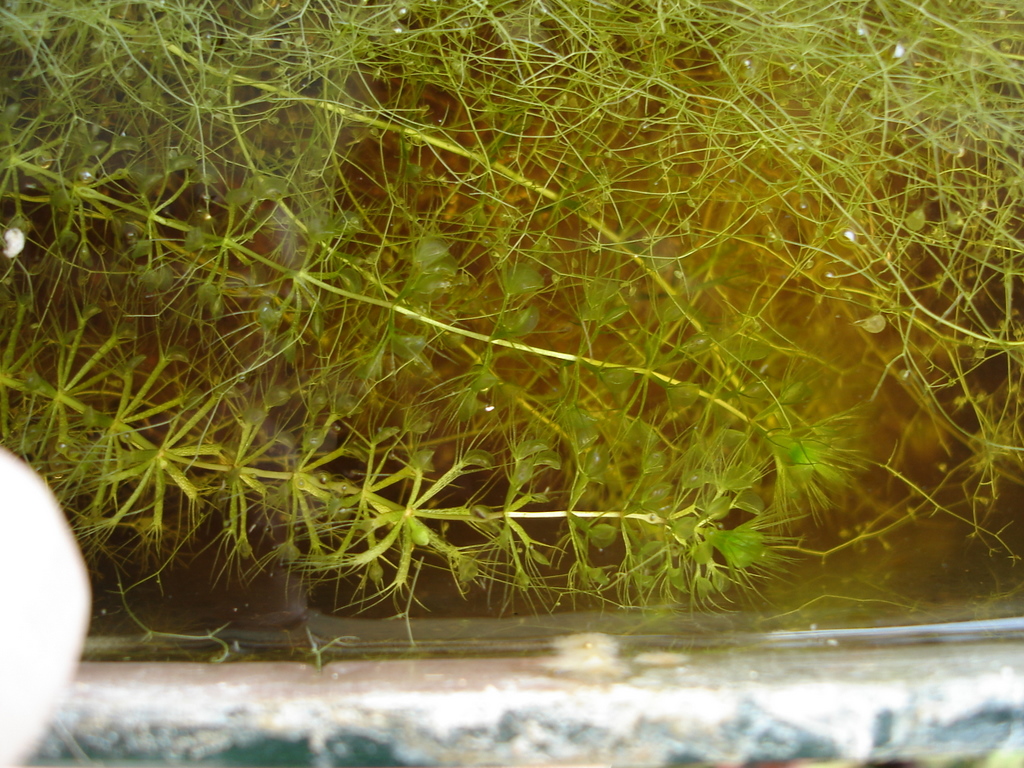 There's a Utric growing next to it, so you can see the difference in the traps. Link to Post - Back to Top  Logged arvin555 Logged arvin555Junior Member   member is offline Joined: Feb 2008 Posts: 64 Location: Phillipines  Re: Aldrovanda vesiculosa Re: Aldrovanda vesiculosa« Reply #22 on Jun 8, 2008, 9:41pm » Thanks for the photo Ifurita, thanks for the great writeup Rich! I checked my plant and it is in fact Utric not Aldro. Actually Ifurita, my U. Vulgaris has a more structured form like the Aldro the Utric in your photo looks like the one native here, which I have in my pond as well. I hope that in the near future I can get some Aldros from you guys, like Lim. Lim, I too only have Rachovii only, 3 fries left only. Poor Cherry Shrimp naupliis, hey you should just give those to me instead, stick with BBS. Oh, you know I have been keeping several cultures of daphnia/Moina, I have them for half a year now and still okay, nice food for Utrics and Aldros  I will be keeping my Aldros (in the future I don't have any yet) in a very shallow pond, which works out nicely from what Rich posted. Rich. 1. No need dormancy of course right? 2. Any temperature requirements? can they take 40C temps? TTFN Arvin Link to Post - Back to Top  Logged rsivertsen Logged rsivertsenNew Member  member is offline  Joined: Apr 2008 Gender: Male  Posts: 15 Location: Northwest New Jersey, (USA)  Re: Aldrovanda vesiculosa Re: Aldrovanda vesiculosa« Reply #23 on Jun 8, 2008, 10:53pm » Hey guys, Nice to see Aldrovanda growing in some collections in this part of the world! As you can see, they grow incredibly fast! Much faster than any terrestrial CPs! As for dormancy, I'm not sure if they will be triggered into forming dormant turions, growing so close to the equator, as the photoperiod and temperature is nearly the same all year. Here in northern New Jersey, USA, it grows continuously until mid November, when ice is already beginning to form on the surface of some lakes and ponds, and the day length is reduced to less than 8 hours per day. They can tolerate warm, even hot temperatures very well, and in fact today, we are having a terrible heat wave with ambient air temperatures well in the 30C (95F), and the water temps are near 35C (100F)! I have never measured them warmer than that, so 40F may be pushing their limits a bit. Their need to feed, and CO2 requirements are only part of the entire equation. For such simple looking plants, they seem to occupy a very complex niche, with simultaneous symbiotic relationships with several creatures and cohabitant plants. They capture and digest more food than they can use for their own immediate needs, and release the excess nitrogenous matter back back into the water, which is quickly absorbed and assimilated by the roots of these large monocot plants that produce massive root systems, that are just a few cm below the Aldrovanda strands. Without this mutualisim, and balance, filamentous algae quickly overwhelms the strands. They also need the services of small snails and fresh water shrimp (perhaps even small tadpoles) to help remove the spent prey carcasses from the older traps before algae hits them. They also love to have the detritus, and clay rich silt stirred up, at least once a week, which releases the minerals and the creatures that live there, which become part of the meal ticket. The dirtier the water, the better! In my pond, my boots churn up so much detritus, clay and silt, that it renders the water opaque, and I can't even see the Aldrovanda strands behind me, where I've walked through. Remember, they grow best in very shallow water, just enough to cover the strands, above the detritus layer, (just a few cm above the monocot roots systems) and the Utrics grow better in the deeper water. They also seem to do better in full direct sunlight for several hours a day. I tried to grow them under lights, and just couldn't find anything that could produce the intensity of the blue side of the spectrum that brings out the color of the red forms, and the robust growth of the green forms. Perhaps the mercuric halide lamps (400W) lamps used for live coral aquariums might be useful, but the cost of these lamps, and electricity seems a bit extravagant to me. I have plenty of Aldrovanda to go around to anyone who has a shallow pond with monocot plants (even lotus plants, or bamboo, or any decorative/ornamental grasses used for landscaping) that produce massive root systems which lay directly beneath the Alrovanda strands. - Rich « Last Edit: Jun 8, 2008, 11:14pm by rsivertsen »Link to Post - Back to Top  LoggedI'm not suffering from insanity, ... rather enjoying it actually! plantlover LoggedI'm not suffering from insanity, ... rather enjoying it actually! plantloverSenior Member     member is offline  Now I'm getting more experienced  Joined: Jan 2008 Gender: Male  Posts: 484 Location: Batu Pahat, Johor  Re: Aldrovanda vesiculosa Re: Aldrovanda vesiculosa« Reply #24 on Jun 10, 2008, 4:32pm » Wah!! Aldrovanda so cute. Link to Post - Back to Top  LoggedAaron arvin555 LoggedAaron arvin555Junior Member   member is offline Joined: Feb 2008 Posts: 64 Location: Phillipines  Re: Aldrovanda vesiculosa Re: Aldrovanda vesiculosa« Reply #25 on Jun 14, 2008, 11:28am » Lim, what would you say your water parameters are? Do you add something to make the pH a bit more acidic? TTFN Arvin Link to Post - Back to Top  Logged piscesilim Logged piscesilimGlobal Moderator        member is offline Joined: Dec 2006 Gender: Male  Posts: 463 Location: Bukit Mertajam, Penang  Re: Aldrovanda vesiculosa Re: Aldrovanda vesiculosa« Reply #26 on Jun 14, 2008, 3:57pm » CO2 and GEX soil help to maintain the pH lower. Link to Post - Back to Top  LoggedLim rsivertsen LoggedLim rsivertsenNew Member  member is offline  Joined: Apr 2008 Gender: Male  Posts: 15 Location: Northwest New Jersey, (USA)  Re: Aldrovanda vesiculosa Re: Aldrovanda vesiculosa« Reply #27 on Jun 14, 2008, 8:21pm » Aldrovanda does not really require lower pH, (acidic water) and is often found in neutral (pH=7.0) or slightly alkaline water. Their primary requirement is a constant source of CO2 for photosynthesis, which is provided by the root systems of companion monocot plants, and the need to feed. - Rich Link to Post - Back to Top  LoggedI'm not suffering from insanity, ... rather enjoying it actually! arvin555 LoggedI'm not suffering from insanity, ... rather enjoying it actually! arvin555Junior Member   member is offline Joined: Feb 2008 Posts: 64 Location: Phillipines  Re: Aldrovanda vesiculosa Re: Aldrovanda vesiculosa« Reply #28 on Jun 15, 2008, 8:03am » Thanks Lim and Rich for the info. Rich, was intersted in monocot plants that you have been mentioning but an internet search gave me a really broad definition of it. At least Wikipedia mentioned that it's a type of flowering plant, the other one are Dicots. It also mentions Orchids as one example, others are Grains like Rice, wheat and Maiz (what is the difference between Maiz and corn anyway?) The most practical and easy way to distinguish Monocots is: " That is to say, a monocotyledon's flower typically has three, six, or nine petals. Many monocots also have leaves with parallel veins." (wikipedia) Okay well my question Rich is can you give us specific monocot plants that you know live with Aldrovandas and benefit mutually with each other? A big tip from my research is that Lilies are monocots. TTFN Arvin ps. in some aldrovanda sites, they mention of the use of water hayacinth. « Last Edit: Jun 15, 2008, 8:14am by arvin555 » |
|
#3
|
||||
|
||||
|
Glad to answer any questions regarding Aldrovanda! I recall having many misconceptions about growing them myself, and if I can help someone better understand and grow these plants, then the world is a better place! :D
Aldrovanda seems to cluster around Juncus hummocks, growing through the dense stems, which are rooted just a few inches below the surface of the water. They also seem to do very well in the Phragmites beds, and in between the massive Carex hummocks, and even nestled in the grasses that come up from seed after all the water has dried up for a few days/weeks. I would not recommend water hayacinth plants because their roots do not spread out and grow directly under the Aldrovanda strands. CO2 out grasses very quickly, especially in warmer water, and also escapes directly upward, so that the CO2 released by those roots would percolate up, and miss the Aldrovanda. Lubomir Adamec has published several articles about how CO2 maybe the MOST important factor in successfully growing Aldrovanda. Water hayacinth plants also grow directly on the surface of the water and compete with the Aldrovanda for sunlight. The decorative grasses, reeds (even Papaya, or any large plant with parallel veins, typical to grass-like plants) that spread out and directly under the Aldrovanda strands, in close proximity, should do the trick. Corn and maize are essentially the same thing, and yes, they are monocots too. Monocots have a strong appetite for nitrogenous matter, and in exchange for those nutrients, their rate of respiration increases, which generates more CO2 for the Aldrovanda. It's a fully reciprocal mutualsim (symbiotic) relationship. The most common mistake most people make in attempting to grow Aldrovanda for the first time is growing them in water that's too deep, and the water too clean! They grow best in very shallow, murky, muddy water, where the population density of the zooplankton community is the greatest, the CO2 levels are the highest, and where they are closest to those root systems of monocot plants. - Rich |
|
#4
|
|||
|
|||
|
Hello. I live in P.J and I would like to ask where if anyone could offer/sell some Aldrovanda vesiculosa plants to me please?
Thanks, Stanley |
 |
| Currently Active Users Viewing This Thread: 1 (0 members and 1 guests) | |
| Thread Tools | Search this Thread |
| Display Modes | |
|
|